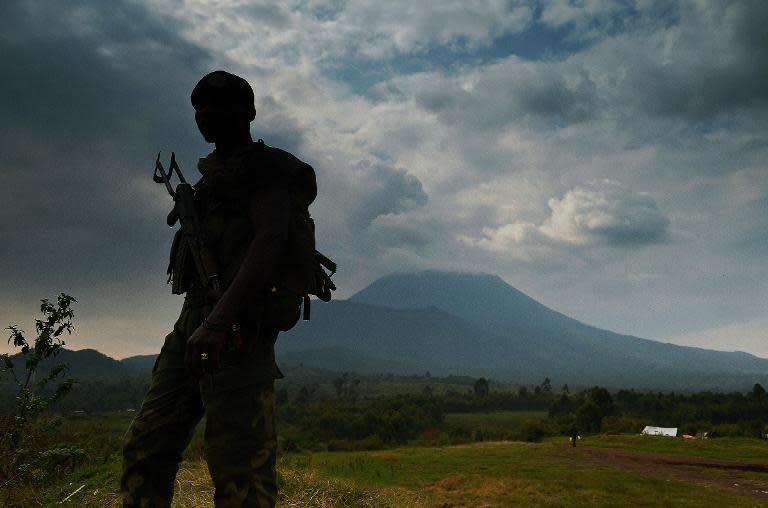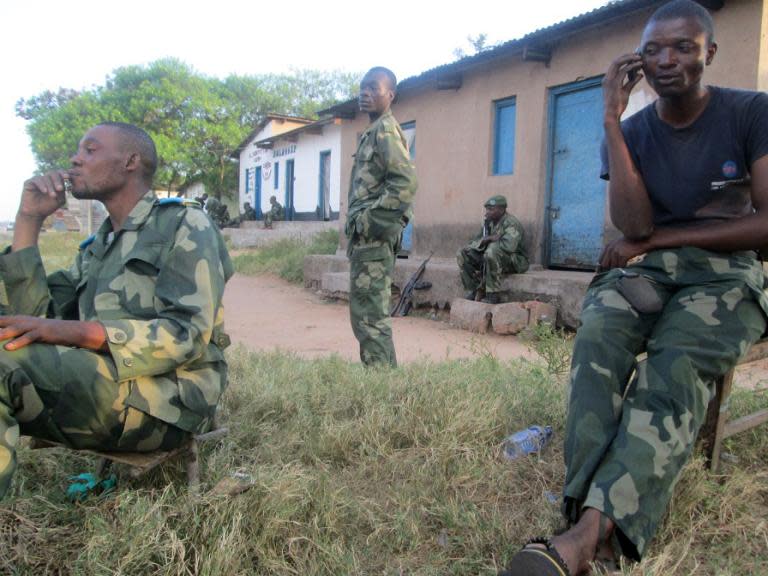Fresh fighting erupts on DR Congo-Rwanda border
Fighting flared again on the border of Rwanda and the Democratic Republic of Congo early on Thursday, the second day of skirmishes between two neighbours locked in a decades-long dispute. Rwandan and Congolese troops traded heavy weapons fire around 8:00 am (0600 GMT), said a resident and an adminstrative official in Kanyeshaza, about 20 kilometres (12 miles) northeast of Goma, capital of troubled North Kivu province. "There were heavy arms fire, explosions, rockets," which lasted for half an hour, the resident told AFP on condition of anonymity. A senior Congolese military officer said that Rwandan troops had attacked their positions, but a Rwandan military source, also speaking anonymously, told AFP that there had "not been serious clashes, they were sporadic firings" of heavy weapons. The latest cross-border clash came a day after the two sides exchanged automatic weapons fire, with each blaming the other for the outbreak of violence. One Congolese soldier was killed. The Congolese army said the conflict started after one of its soldiers was kidnapped by Rwandan troops who crossed into the North Kivu, while Rwanda said Congolese troops crossed into its territory and opened fire on Rwandan soldiers. "We are only seeking to reinforce our positions," North Kivu Governor Julien Paluku said. A resident of a village on the road from Goma to Kanyesheza, said he watched mounted heavy machine-guns and three army tanks roll past on Thursday morning. Each side denied returning fire when shelled by the other. Much of the tension between the Kinshasa and Kigali government arises from the presence in the eastern Kivu provinces of Rwandan Hutu rebels in the Democratic Forces for the Liberation of Rwanda (FDLR). This armed movement's older members are accused of taking part in the 1994 genocide of ethnic Tutsis in Rwanda. Three months of slaughter claimed an estimated 800,000 lives, while the FDLR has since been accused of serious atrocities against villagers in the DRC. - Joint verification mission - The Hutu fighters first fled across the border 20 years ago when the Tutsi-led Rwandan Patriotic Front took power in Kigali, led by Paul Kagame, who is today president of the small central African nation. Rwanda last fired on its neighbour in October 2013 in a bid to slow the Congolese army's advance in a successful final offensive against M23, a rebel force that briefly took control of Goma and had backing from Kigali, according to the Congolese government and the United Nations. In an apparent sign of goodwill, the Rwandan and Congolese armies sent a team from a Joint Verification Mission (JVM) they have formed with the United Nations to carry out checks in the conflict zone, a JMV official who monitors the border said. Rwanda and its highly trained army have long been closely involved in the affairs of its vast western neighbour. in the First Congo War of 1996-97, Kigali supported the ouster of longtime dictator Mobutu Sese Seko by Laurent-Desire Kabila. Kabila helped spark the Second Congo War (1998-2003) by ordering Rwandan and Ugandan allied troops out of the country, which had recently changed its name from Zaire to DRC. They changed sides in a terrible conflict that brought in at least six foreign armies and claimed at least a million lives, according to low estimates. His son, President Joseph Kabila, has ruled since Laurent-Desire Kabila was murdered by a bodyguard in 2001, but neither his troops nor a large UN mission, MONUSCO, have pacified the unstable east, roamed by a range of armed movements and tribal militias. The conflict is fuelled by the east's wealth of mineral reserves -- particularly gold and minerals used in many electronic products such as mobile phones. Congolese authorities are seeking to disarm FDLR forces, estimated at around 1,500, according to the United Nations, or 4,000, according to Kigali. When about 100 rebels turned themselves on March 31, Governor Paluku gave them a choice of repatriation or asking for political asylum.



